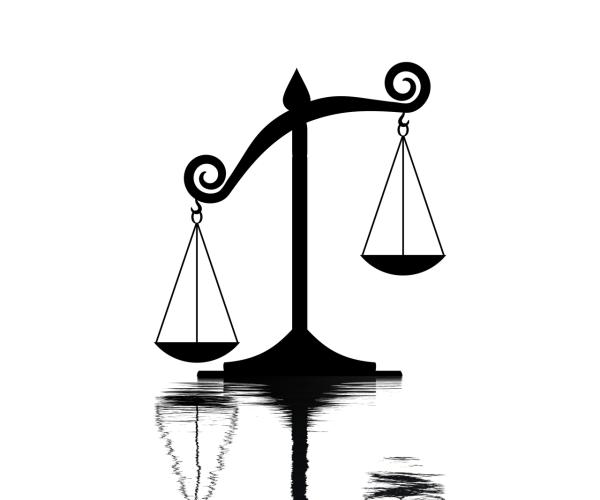Sadly, on occasion, we have seen judicial nose-thumbing of scientific or medical decisions - with untoward health repercussions. But before commiserating - with dissenting Justice Kagan, recall that Chevron applied only to ambiguous statutes. By their nature, statutes are laws enacted by legislators, who, by and large, avoid scientific issues. Agencies promulgate specific technical or scientific directives (rules and regulations) after allowing public notice and comment. This procedure is still protected from judicial incursion under the Auer doctrine. That means that most technical and scientific determinations should still enjoy some, albeit attenuated, deference. [1]
The concerns raised by my colleague and friend Dr. Dinerstein pertain to judicial intercession into statutorily derived technical and scientific determinations and have been echoed by others. While insightful, practically speaking, I doubt the issue will seriously or significantly materialize. Even Judge Roberts acknowledges the difference between factual findings (upon which most agency determinations arise) and legal findings, with reasonable factual findings generally inviting deference:
“Court often treated agency determinations of fact as binding …, provided … there was “evidence to support the findings…. Congress could therefore “endow the agent with power to make findings of fact .….”
But it doesn’t always do that. We must be mindful that courts have (and will) hubristically insinuate themselves where they shouldn’t. One example of judicial ignorance harming public health arose regarding a district court’s 2019 decision on the CDC’s masking mandate on mass transit. There, Judge Mizelle interprets the relevant statutory powers of the CDC, even acknowledging that the CDC commissioner is statutorily authorized:
“to make and enforce … regulations … to prevent the introduction, transmission, or spread of communicable diseases from foreign countries …. [the CDC] may provide for such inspection, fumigation, disinfection, sanitation, pest extermination, destruction of animals or articles found to be so infected or contaminated as to be sources of dangerous infection to human beings, and other measures, as in his judgment may be necessary.”
But Mizelle ruled this statute doesn’t encompass masking, striking down the CDC’s directive. The Chevron argument, which clearly should have governed – was rejected outright by the court! (So much for Chevron deference – it hasn’t really existed for a long time).
Agency lawyers argued masking is covered under “sanitation.” The judge said “sanitation” means cleaning.
“The government interprets "sanitation" and "other measures" to include traditional techniques that impede the spread of disease. …One definition it relies upon …. [d]efin[es] "sanitation" as the "applying of measures for preserving and promoting public health."
Using a self-serving analysis, the court could not accept that Congress would confer such broad powers on the CDC (even if it meant saving the country from certain collapse due to, for example, the Spanish Flu). Clearly, even before Loper Bright, courts found ways to ignore agency determinations – even those based solely on scientific considerations.
Yet, neither the briefs nor oral arguments of CDC attorneys suggest any other basis for the directive or provide any public health precedent of masking or attempt to expand the judge’s sophomoric understanding of the term “sanitation” and confront her misguided appreciation of the word when used as a term-of-art.
Here is the seed of the problem – it’s not always the judge’s fault. Agencies could do a better job of explaining their reasoning. In this case, one of the CDC’s shortcomings was side-stepping the public notice and comment requirement (due to the reasonable “urgency” of the situation), where they could have preemptively explained their rationale, including a detailed, transparent and proactive basis for their ruling.
Justice Roberts Says: “Call for Help!”
Justice Roberts tries to anticipate Dr. D’s concern regarding judicial expertise in technical and scientific issues by imagining these would be amply explained by the lawyers and amicus briefs.
“Courts, .., do not decide such questions blindly. The parties and amici in such cases are steeped in the subject matter, and reviewing courts have the benefit of their perspectives. In an agency case in particular, the court will go about its task with the agency’s “body of experience and informed judgment,” among other information, at its disposal. And although an agency’s interpretation of a statute “cannot bind a court,” it may be especially informative “to the extent it rests on factual premises within [the agency’s] expertise.”
The Justice lives in an ivory courthouse. Lawyers are often scientifically ignorant and amicus briefs often go wanting. While people often blame the judge for scientific superciliousness, the role of advising and educating the judge is, and always has been, the province of the lawyer.
Public health practitioners know “sanitation” is a term of art conveying broad health-related powers. Yet neither CDC scientists nor attorneys thought to give the judge a concrete example of this practice in real-time. One such precedent is the directive of Dr. John Snow that quelled the London cholera epidemic of 1854. Decades before the cholera bacillus was identified, Dr. Snow determined the epidemic was spread via the water pump on Broad Street. He beseeched the authorities to remove the pump handle, and when they did – the epidemic ended. This was not an act of inspection, fumigation, disinfection, pest extermination, nor the destruction of animals, the powers enumerated in the statute. The only statutory term statute that could reasonably encompass this response is sanitation. And that is just what the London Health Department did.
Sadly, this argument, which would have illustrated how the use of the term “sanitation” would include requiring “barriers” that prevent transmission, i.e., masking, was never brought before this court or on appeal.
The moral of the Loper Bright/Chevron story:
Fageddabout the courts - teach your lawyers (who eventually become judges) science and school your health lawyers in public health and its history.




